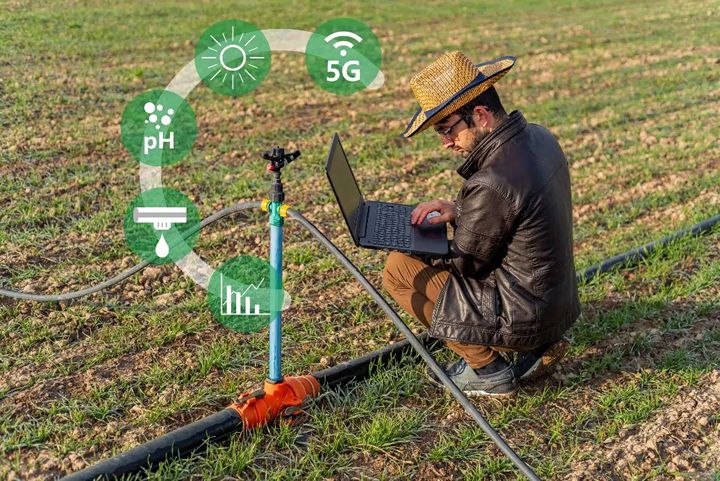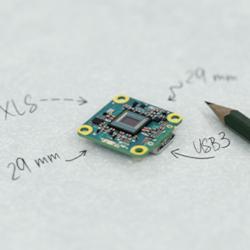Akin to Industry 4.0, Agriculture 4.0 refers to the next big trends facing the industry, including a greater focus on tools for precision agriculture, as well as agricultural technology (‘AgTech’).
 The AI Agricultural Revolution – A Fertile Ground for Growth
The AI Agricultural Revolution – A Fertile Ground for Growth

Article from | Agmatix
Agriculture and farming are two of the oldest and most important fields in the world. Over time, humanity has come a long way in how we farm and grow crops with the introduction of various agricultural technologies. This trend is set to continue, as robotic systems and artificial intelligence (AI) enable farms to be more profitable, efficient, safe, and environmentally friendly, with tech companies like Agmatix pioneering the AI agricultural revolution.
As the world population continues to grow and the amount of arable land decreases, it is vital for farmers to get creative and become more efficient, using less land to produce more crops by increasing the productivity and yield of those farmed acres.
According to the World Government Summit Report, entitled ‘Agriculture 4.0 – The Future of Farming Technology’, we will need to produce 70 percent more food by 2050 due to continuously growing demand – and with farmland limited, a large proportion of this increased supply will need to come from making existing growth sites more efficient.
Agriculture is already lagging behind, with about 800 million people worldwide suffering from hunger and the world’s population assumed to grow to nearly 10 billion by 2050. On the current trajectory, 8 percent of the world’s population will still be undernourished by 2030. The added challenges of water, environmental impacts and less arable land, against the backdrop of global warming and population growth, are bringing mankind to a point where it must adapt and innovate to survive. Just as in the era leading up to the first agricultural revolution, our way of living and consumption does not allow the status quo to continue as is.
Fortunately, Agriculture 4.0 is developing at a rapid pace to address these growing issues within the agricultural industry. Akin to Industry 4.0, this refers to the next big trends facing the industry, including a greater focus on tools for precision agriculture, as well as agricultural technology (‘AgTech’), the internet of things (IoT), and the use of big data to drive greater business efficiencies and better decisions in the face of challenges such as rising populations and climate change.
Amongst those in the agricultural community, usage of AI technology is already growing in popularity, as these systems become more and more integrated with current machinery. On its current path, IoT-enabled agricultural monitoring is agriculture’s fastest-growing technology segment, projected to reach $4.5 billion by 2025. Global spending on smart, connected agricultural technologies and systems as a whole, including AI and machine learning use in agriculture, is projected to triple in revenue by 2025, reaching $15.3 billion per year.
Agriculture 4.0 will no longer depend on solely applying water, and other crop inputs uniformly across entire fields. Instead, by using AI as part of Agriculture 4.0, farmers will use the minimum quantities required for production and target specific areas to produce better yields more efficiently and profitably. These smart technological advancements mean that the farming and agricultural operations landscape of the future will look very different, incorporating smart technological advancements such as sensors, devices, machines, and information technology. The data farmers collect through these technologies can be utilized via field trial management to collaborate and share across stakeholders to plan, orchestrate and analyze field trials, driving forward new innovations in agriculture.
Agri Tech companies like Agmatix have already started to harness these new technologies, with visible results. By harmonizing and standardizing all agronomic data and turning it into actionable insights, Agmatix are making results from big data universally accessible. By supporting agriculture professionals globally, they are succeeding in overcoming obstacles in sustainable food production and quality, through crop nutrition optimization, among other things.
The possibilities of utilizing AI within today’s agricultural sphere seem almost limitless, but the ability to improve crop yield prediction is arguably one of its most critical capabilities. The process involves using real-time sensors and drones to provide data and visual analytics based on soil, meteorological, environmental, and crop parameters. Ultimately, this helps farmers to get the most out of their crops and avoid waste.
Another useful way of leveraging AI technology to drive waste reduction is to optimize crop nutrition application. With product prices increasing, there is rising demand for technologies to reduce costs while increasing yields. Among other uses, these new AI technologies aid farmers and agronomists in calculating the right mix of pesticides and fertilizers to use on a certain area, while limiting application to only the field areas shown as needing treatment. Beyond this, other focus areas across the industry, such as yield mapping to find patterns, identifying irrigation leaks, solving labor shortages, and monitoring the health of livestock are all made easier and more productive using AI.
Ultimately, in order for the industry to adapt and thrive in step with growing trends, we will inevitably see the increased adoption of multiple precision tools and sophisticated technologies across the agricultural world – from AI, robots and drones to the Internet of Things (IoT), temperature sensors, aerial site images, ground/soil sensors and GPS. However, like any technology, achieving true, long-term success goes beyond the physical devices and relies entirely on the way in which they are used. For the agricultural world, making these critical efficiencies and boosting productivity is dependent on utilizing the various tools effectively to extract and deliver useful, live information to the farmer, as well as ensuring the precise management of these devices, which all have different outputs, formats and data types. This requires sophisticated tools and software to integrate with vast amounts of Big Data and research information.
Agmatix is already delivering in this area, with a number of proven case studies demonstrating the success of its Digital Crop Advisor: a data-driven decision support system using large amounts of available data to optimize day-to-day crop management. As the world’s first single engine that drives the agronomic innovation cycle from research and experimental data into meaningful real-life action, the technology can read and interpret thousands of the different data points commonly used across the agricultural industry to help agronomists and farmers to make better decisions to ultimately increase yields and crop quality. Storing this data in one place is advantageous for managing all past and future trial data, a capability enabled with Agmatix Agronomic Trial Management. Combining a wealth of research, real-world data and key industry insights within a smart, cutting edge system, the potential is vast. This truly is just the beginning when it comes to the potential of emerging Agri Tech; it is indeed a fertile ground for growth.
References
- https://www.worldgovernmentsummit.org/api/publications/document?id=95df8ac4-e97c-6578-b2f8-ff0000a7ddb6
- https://www.sciencedirect.com/science/article/pii/S258972172030012X
- https://www.forbes.com/sites/louiscolumbus/2021/02/17/10-ways-ai-has-the-potential-to-improve-agriculture-in-2021/?sh=1dd3592c7f3b
The content & opinions in this article are the author’s and do not necessarily represent the views of AgriTechTomorrow
Comments (0)
This post does not have any comments. Be the first to leave a comment below.
Featured Product


